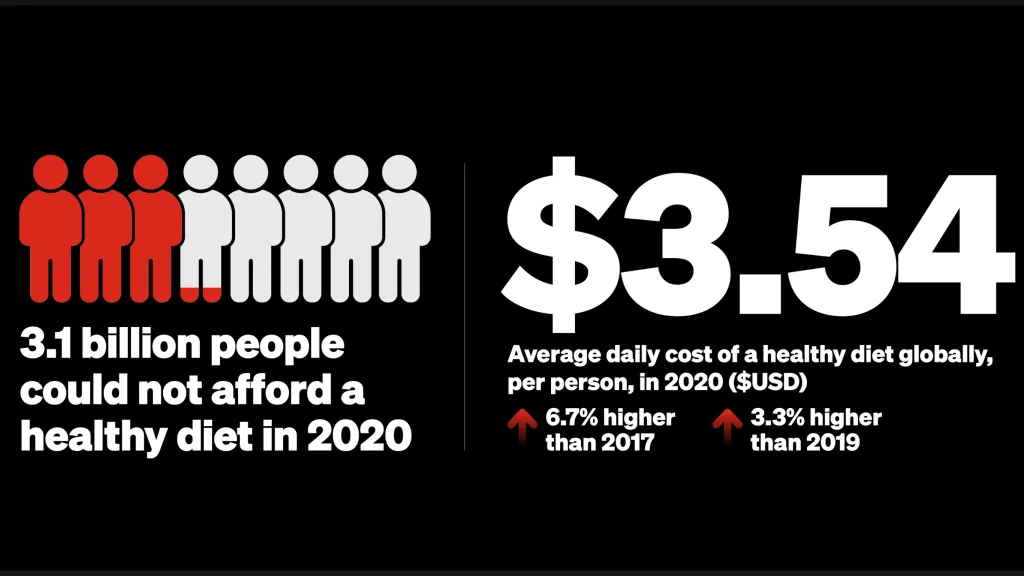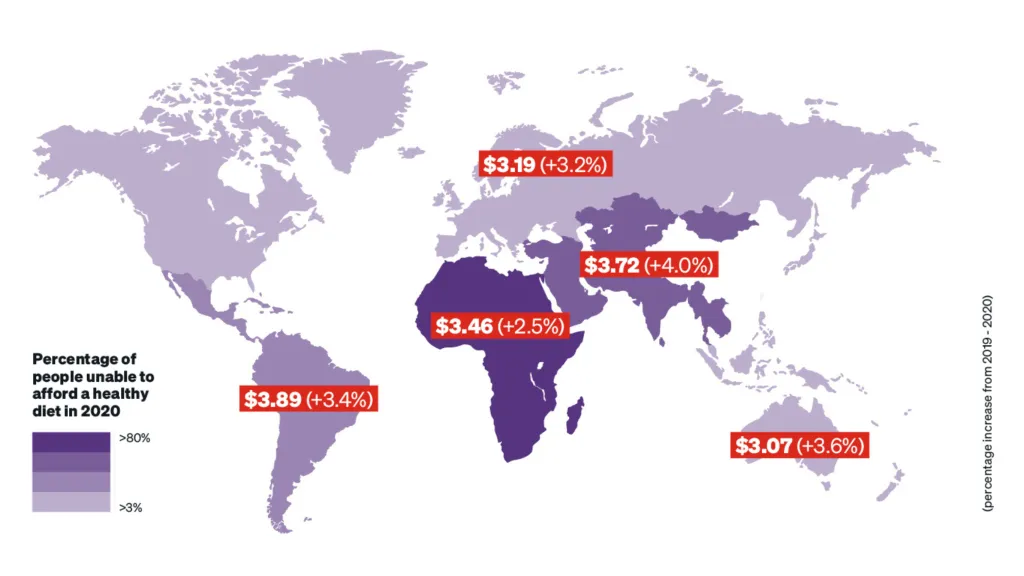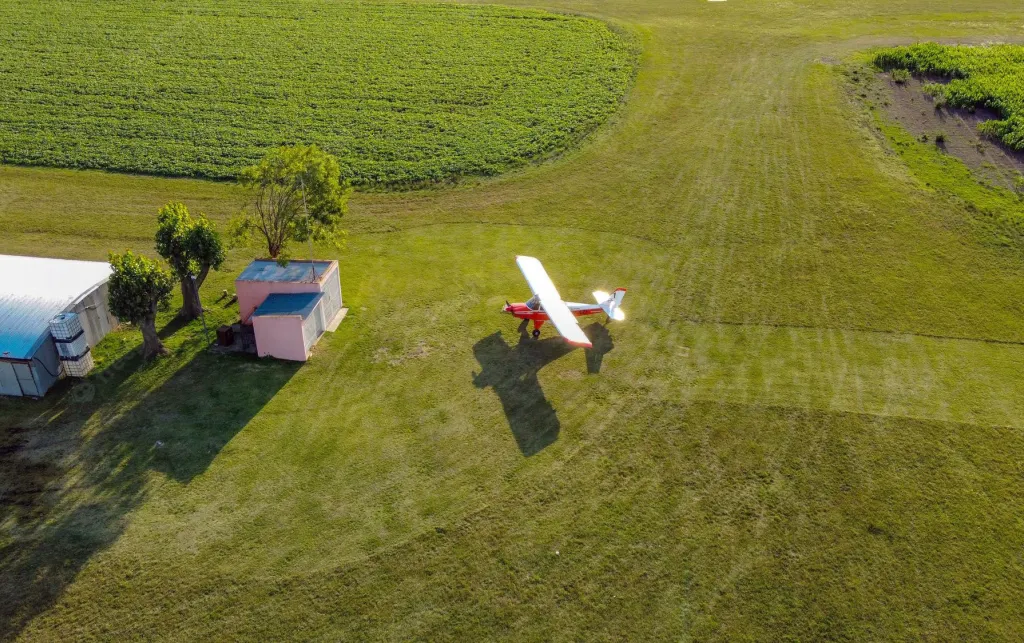5. Corporate agriculture and the right to health

Food quality and nutrition
Driving these health concerns is the shift towards homogenisation and corporate monopoly control over the agrifood system, which produces poor quality, nutrition and vitamin-free staple crops in unhealthy ways and processes them into less healthy food.
This dynamic has two sides, which have devastating impacts on nutrition and on the development of new pathogens. The first is the Green Revolution-prompted shift from nutritionally dense varieties of wheat and other crops to the overproduction of nutritionally-light, fast-growing cereal varieties, to the detriment of other traditional cereals such as sorghum and barley. One example is the use of corn, which is being mass-produced into almost genetically identical varieties and processed into high-fructose syrup, for use in the highly processed fast-food industry. The consumption of food stuffs such as high-fructose syrup causes obesity and diabetes in the millions, and since many people do not have access to enough food, the result is mass hunger.
In Tunisia, obesity is rising as the nutritional value of affordable food decreases, with families surviving off mixed vegetable oil, onions, and white flour baguettes made with less nutritional wheat varieties. In Mauritius, obesity is rising amongst adolescents and middle-aged, post-menopausal women. Poorer communities in Global South countries are forced into eating energy-dense food, rich with trans-fats and cheap vegetable oils, which is all that is affordable.
The overproduction of certain crops, which are dumped into the international markets through the ultra-processed food industry, is the result of rising corporate monopoly penetration of Global South markets. Mexico, a major producer of processed food with sales of US$124 billion in 2012, is dominated by Global North corporations such as PepsiCo, Unilever, Danone, and Nestlé, all of which have infiltrated local distribution networks, including convenience store chains. The results have been catastrophic for human health.
The numbers of Mexican women aged 20-49 and classified as overweight increased from 25% to 35.5% between 1988-2021, with those categorised as obese surging from 9.5% to 37.5%; while 29% of Mexican 5–11-year-olds were categorised as overweight.
In 2015, 10 million people in Mexico suffered from diabetes, which is closely linked to obesity. This is a staggering 7% of the population, and 21% of those aged 65-74. In 2012, Mexico ranked sixth in the world for diabetes deaths.85

Food production, pathogens, and epidemics
Poor production processes (such as intensive farming with high levels of antibiotic residues) in the global agrifood system cultivate pathogens and bacteria, such as Salmonella and Campylobacter, which are harmful to human health.
Other diseases have emerged from production measures linked to agribusiness. Malaria in India has been linked to the construction of dams for irrigation of capital-intensive export crops. Forest frontiers are increasingly spotted with megafarms where, as the biologist Rob Wallace writes:
Novel zoonotic pathogens are spilling over out of previously marginalised reservoirs of wild hosts and […] into local livestock, wild food animals and the farm workers or wranglers who tend them. Some diseases such as the Nipah virus [infection], coronavirus [infections] and Ebola spill at these points of disruption. Previous ecologies that marginalised these pathogens to a select few hosts are unplugged and then reconnected in such a way that the pathogens have new exits out through the circuit of production they didn’t have before. The pathogens make their way to a regional capital and some to the world."
Other diseases have emerged in megafarms on the outskirts of cities, which supply food to urban centres. Food-borne bacteria or avian influenzas mingle and become deadlier on the bodies of millions of poultry and livestock animals, before infecting human populations.
Nearly all documented cases of avian influenza transmission to humans (between 1959 and today), occurred in commercial bird farms, warehousing up to hundreds of thousands of birds. These intensive-farming operations, densely packed with birds, are conditions in which influenza thrives, even producing unique strains. Some scientists’ theories have stated there is compelling evidence that Covid-19 emerged from a mutation affecting live bats sold at a market in Huanan, China, with the disease transmitting to people working there, before spreading to become a pandemic.87
Toxic agrochemicals and the public health emergency in the Global South
Another major danger to human health is the rising use of toxic agrochemicals, or agrotoxins, in agriculture.88
According to a recent study, 9 million deaths are linked to environmental pollution annually, with pesticides a major contributing factor.89
Pesticides can damage the human reproductive system, and cause birth defects, cancer, and neurotoxicity.
Agrotoxins affect biodiversity, destroying insect and bird populations.90
This ‘epidemic’ of environmental poisoning is the result of rising corporate monopoly control over agricultural production, which has seen identical ‘technological packages’ used across the Global South. One of the most renowned technological packages is Monsanto’s RoundUp Ready, a packed solution of genetically modified seeds (usually soya), associated with the herbicide glyphosate. These seeds are hybrid and cannot be replicated, and only toxic glyphosate works with this variety of herbicide-resistant seeds. Farmers are then forced to rebuy this package every year, with smaller-scale farmers frequently falling heavily into debt.
Paraquat, a deadly herbicide which is illegal to use in Europe, is currently produced in the UK and exported to many countries in the Global South.91
Because of weaker environmental protections, often linked to a legacy of colonial rule, southern Indigenous people and peasants are more vulnerable than those in the Global North to the dangerous effects of toxic pesticide use. Peasants’ health becomes viewed as what the economists would define an ‘externality’ of the production process, rather than as a human rights violation.
FOCUS: Toxic agrochemicals violating the right to health in South America
Ground-zero for this global process has been what Syngenta called “The United Republic of Soybeans” the neocolonial moniker applied to the Southern Cone of South America – a vast subregion that covers southern Brazil, Argentina, Chile, Uruguay, Paraguay, and Bolivia – in a 2003 advertisement which ran in Argentinian newspapers. The Southern Cone is a stark example of both the commodification of natural resources, with soy and maize growing across large latifundios, or plantation lands, and of how much freedom and access large biotechnology corporations (Monsanto, Syngenta) and commodity traders (Cargills, Dreyfus) have to the corridors of power in Global South countries. Land in this vast region is concentrated in the hands of just a few powerful corporations, plantation owners and national elites, the result of both land dispossession through colonialism and missed opportunities for agrarian reform and land distribution policies. The region has also experienced dramatic extractive practices (mining, fracking, agribusiness) and deforestation, which has led to the expulsion of communities from their lands and mass migration to outer-city slums.

In 1996, the Argentinian government approved the cultivation of the first genetically modified soybean in Latin America, based on untranslated studies conducted exclusively by the Monsanto corporation. Across the Southern Cone region, there are now over 40 million hectares of genetically engineered soy monocultures, which are doused in 600 million litres of the agrotoxin glyphosate per year, eradicating at least 500,000 hectares of forests per year. This is happening alongside state violence and the harassment of peasants, including the murders of peasant activists in Brazil, Paraguay and Argentina.92
Crops in the region have been genetically modified to allow for higher and higher doses of agrotoxins to be applied on weeds and pests, with corollary effects on human health, especially poor and often Indigenous people recruited to work on these megafarms.
However, the health of whole rural communities is often directly affected, as planes are used to spray crops with pesticides. Due to this practice, in May 2019, children and adolescents had to be hospitalised and farm animals died across Mato Grosso do Sul in Brazil. Fumigation by plane leaves pesticide residues in water, causing further damage to human health.
In 2011, in Canindeyú, a rural region of Paraguay, a farmer named Rubén Portillo died after suffering the symptoms of severe agrochemical intoxication. Another 22 people from the same community were admitted to hospital with similar symptoms. In 2013, after receiving no response from the national government, communities appealed to the United Nations Human Rights Committee, which ruled against the Paraguayan state in 2019, finding that it was responsible for polluting the community and for clear violations of the right to life.93
In Argentina, the use of glyphosate increased by 848% between 1996 to 2016. A study by medical doctors across the four provinces most affected by soy production found almost double the incidence of cancer than across the rest of the country: an increase in neonatal defects and miscarriages, and an increase in allergies, hormonal and neurological disorders. In 2015, the World Health Organisation declared glyphosate a carcinogen.94
